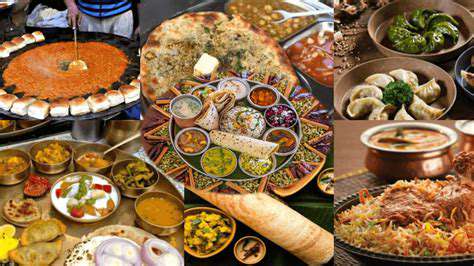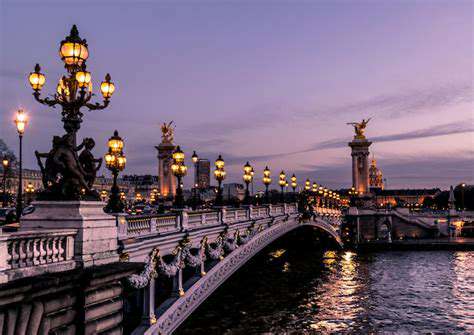A Cultural Immersion Trip to India

Unveiling Hidden Gems
Most travelers rush past the quiet corners where India's true spirit thrives. In small villages and untouched landscapes, you'll find places that guidebooks rarely mention. These hidden spots offer raw, unfiltered encounters with local life—something no packaged tour can replicate. Forget the crowded attractions; here, you'll share chai with farmers, watch artisans craft pottery by hand, and stumble upon waterfalls known only to nearby villagers.
Picture this: waking before dawn to join fishermen casting nets in Kerala's backwaters. Or discovering a 400-year-old stepwell in Rajasthan, its intricate carvings whispering forgotten stories. These moments stick with you long after the Taj Mahal fades from memory.
Embracing Local Culture
India's soul lives in its daily rituals—the clang of temple bells at sunrise, grandmothers grinding spices for lunch, children playing cricket in dusty lanes. When you slow down to observe these rhythms, you stop being a spectator and become part of the story. I once spent Diwali with a Jaipur family, rolling sweets in their kitchen as fireworks exploded overhead. Their laughter taught me more about celebration than any museum ever could.
Connecting with Nature's Majesty
Beyond concrete jungles lie landscapes that defy imagination. Trek through Meghalaya's living root bridges, where ancient trees form natural pathways across rivers. Camp under star-drenched skies in Ladakh's high-altitude deserts. In these wild spaces, you'll rediscover a primal connection to earth that cities have erased. The Himalayas don't just dazzle your eyes—they rearrange your sense of scale and time.
Experiencing Authentic Flavors
Skip the hotel buffets. Follow your nose to street carts where sizzling pans tell generational recipes. In Varanasi, I tasted malaiyo—a frothy milk dessert so delicate it vanishes by noon. The vendor's grandfather invented the recipe; his hands moved with eighty years of muscle memory. Food here isn't just sustenance—it's edible history.
Sustainable Travel Practices
Your rupees vote for India's future. Choose homestays over chains, hire local guides directly, and buy from women's weaving cooperatives. In Spiti Valley, our group helped rebuild a monastery wall using traditional mud bricks. Real travel leaves both parties richer—not just financially, but in shared humanity.
Beyond the Taj Mahal: Exploring Diverse Regions and Traditions
The Rich Cultural Tapestry of Northern India
Punjab's bhangra dancers move like human thunderstorms, their swirling colors mirroring Rajasthan's tie-dye turbans. In Lucknow's old city, calligraphers still craft Urdu poetry with bamboo pens—a dying art kept alive by stubborn masters. These aren't performances for tourists; they're daily acts of cultural survival.
Jaipur's gem-cutters will show you how they've shaped stones the same way since Mughal times. Their workshop floor sparkles with ruby dust, each speck containing sunlight from a thousand dawns. When you commission a piece directly, you're not buying jewelry—you're preserving a lineage.
The Enchanting Cultural Landscapes of Southern India
Kerala's kathakali performers spend four hours painting their faces into mythological characters. The green demon king Ravana emerges stroke by stroke—his curling mustache twitching with every grimace. Nearby, Tamil Nadu's temple chariots stand three stories tall, waiting to crush coconuts under wooden wheels during festival processions.
In Karnataka's coffee country, tribal women sing planting songs while plucking arabica beans. Their voices rise through misty hills, older than the plantations themselves. This is where India's pulse beats strongest—in traditions that predate passports and postcards.
Experiencing the Everyday: Connecting with Local Communities
Exploring Local Markets
Delhi's Khari Baoli spice market assaults your senses—mountains of crimson chili, turmeric roots like gnarled fingers, sacks of cardamom perfuming the air. The real magic happens when you ask How do you use this? Suddenly, grandmothers are pulling you behind counters to demonstrate family masala blends. Markets aren't just shopping destinations—they're living classrooms.
Participating in Local Events
During Kolkata's Durga Puja, entire neighborhoods transform into art installations. I helped a sculptor mold clay for a goddess' eyebrow—his hands guiding mine like a potter's wheel. At midnight, we carried the finished idol through fireworks to the river. Participation erases the line between observer and celebrant.
Engaging with Local Businesses
In Pondicherry's French Quarter, a fourth-generation baker taught me to shape perfect croissants using his great-grandfather's wooden paddle. The yeast remembers, he said, patting the dough like a child's head. His tiny shop survived colonialism, globalization, and a tsunami. Every purchase here keeps history edible.
Embracing the Culinary Delights of India

Exploring Regional Flavors
Goa's vindaloo tells a 500-year-old story of Portuguese vinegar meeting Kashmiri chili. In Chettinad kitchens, stone grinders pound peppercorns into masalas that make your scalp sweat. Every spice route and invasion left flavors layered like geological strata.
The Importance of Fresh Ingredients
Mumbai's fishmongers auction their pre-dawn catch by lantern light. The best pomfret goes to homes, not restaurants—which is why I begged a Bandra housewife to teach me her banana-leaf steamed recipe. Real Indian cooking can't be rushed or preserved—it's ephemeral as monsoon rain.
Planning Your Immersive Journey: Tips and Considerations
Pre-Trip Preparation
Learn ten Hindi phrases beyond namaste. Locals light up when you attempt aap kaise hain? (how are you?). Pack clothes for temple visits—shoulders and knees covered—but leave space for kurta pajamas bought in bazaars. The right preparation isn't about schedules—it's about creating openings for magic.
Engaging with the Local Culture
Ride second-class trains. The man sharing your bench will offer pickles from his tiffin, his wife will insist you try her son's wedding sweets. India reveals itself in unscripted moments—let go of the itinerary.
Post-Trip Reflection
Months later, the smells will ambush you—cumin toasting, jasmine garlands at dusk. Keep a notebook of those fleeting moments: the Sikh truck driver who fed you langar, the village where children taught you hopscotch. True travel doesn't end when you board the plane home.





![Learning to Cook Thai Food in Thailand [Cooking Class Guide]](/static/images/27/2025-05/ChoosingtheRightCookingClassforYourNeeds.jpg)
![Taking a Pottery Workshop in Morocco [Cultural Experience]](/static/images/27/2025-05/BeyondtheWorkshop3AConnectingwiththeLocalCommunity.jpg)

